Complications associated with surgical repair of syndromic scoliosis
- PMID: 25949273
- PMCID: PMC4422098
- DOI: 10.1186/s13013-015-0035-x
Complications associated with surgical repair of syndromic scoliosis
Abstract
Background: There are a number of syndromes that have historically been associated with scoliosis e.g.: Marfan, Down, and Neurofibromatosis. These syndromes have been grouped together as one etiology of scoliosis, known as syndromic scoliosis. While multiple studies indicate that these patients are at high risk for perioperative complications, there is a paucity of literature regarding the collective complication rates and surgical needs of this population.
Methods: PubMed and Embase databases were searched for literature encompassing the surgical complications associated with the surgical management of patients undergoing correction of scoliosis in the syndromic scoliosis population. Following exclusion criteria, 24 articles were analyzed for data regarding these complications.
Results: The collective complication rates and findings of these articles were categorized based on specific syndrome. The rates and types of complications for each syndrome and the special needs of patients with each syndrome are discussed. Several complication trends of note were observed, including but not limited to the universally nearly high rate of wound infections (>5% in each group), high rate of pulmonary complications in patients with Rett syndrome (29.2%), high rate (>10%) of dural tears in Marfan and Ehlers-Danlos syndrome patients, high rate (>20%) of implant failure in Down and Prader-Willi syndrome patients, and high rate (>25%) of pseudarthrosis in Down and Ehlers-Danlos patients.
Conclusions: Though these syndromes have been classically grouped together under the umbrella term "syndromic," there may be specific needs for patients with each of these ailments. Given the high rate of complications, further research is necessary to understand the unique needs for each of these patient groups in the preoperative, intraoperative, and postoperative settings.
Keywords: Complications; Down; Marfan; Nuerofibromatosis; Rett; Scoliosis; Surgical; Syndromic.
Figures
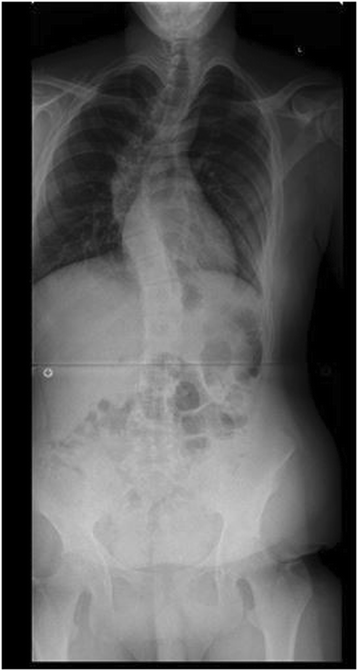
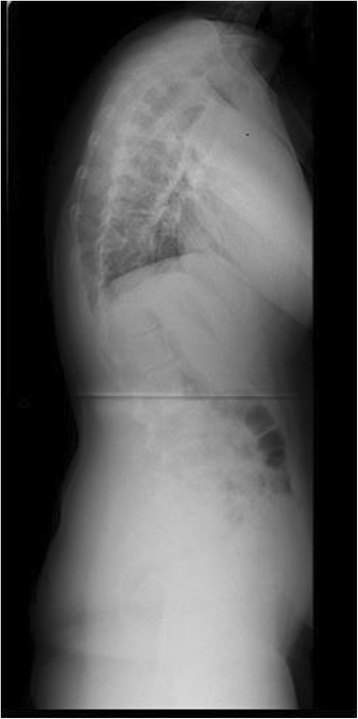




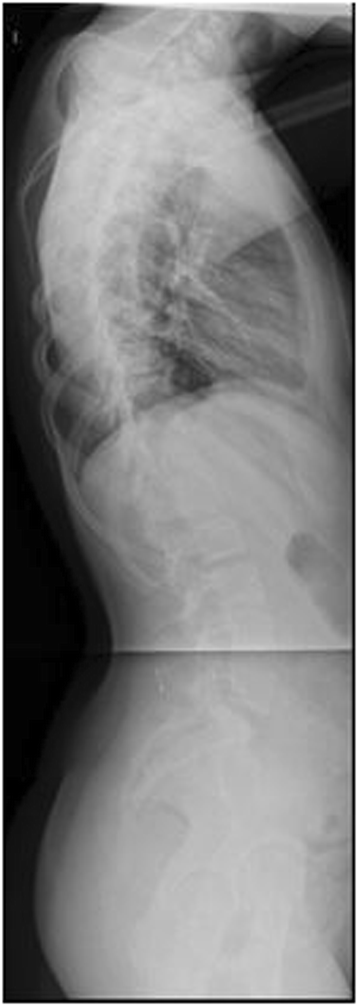
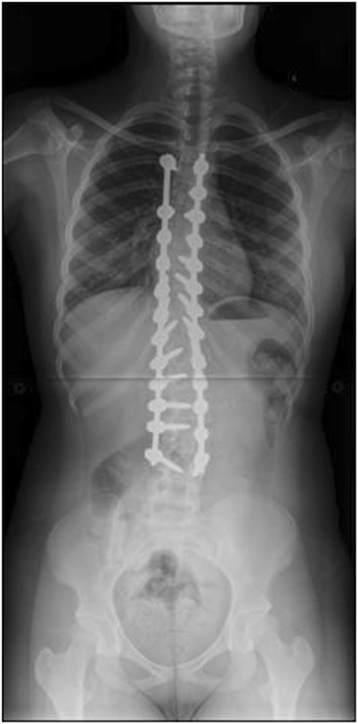




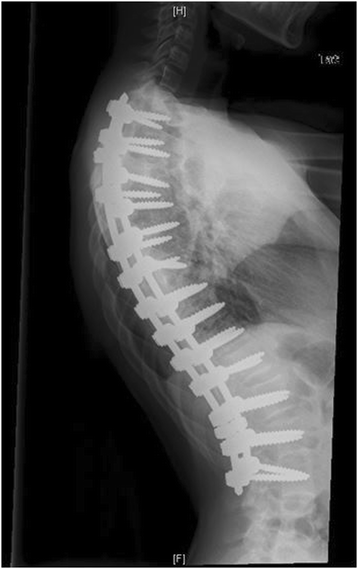
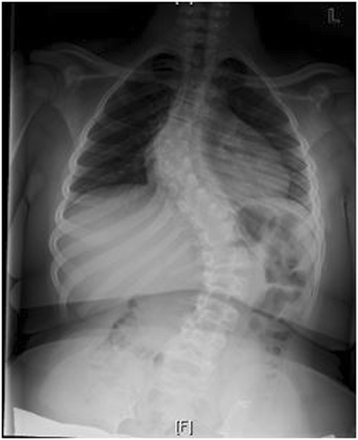
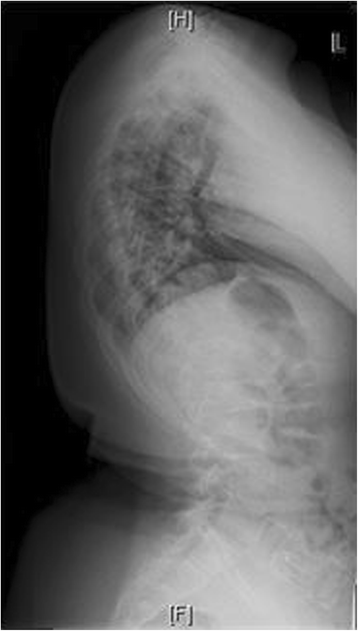

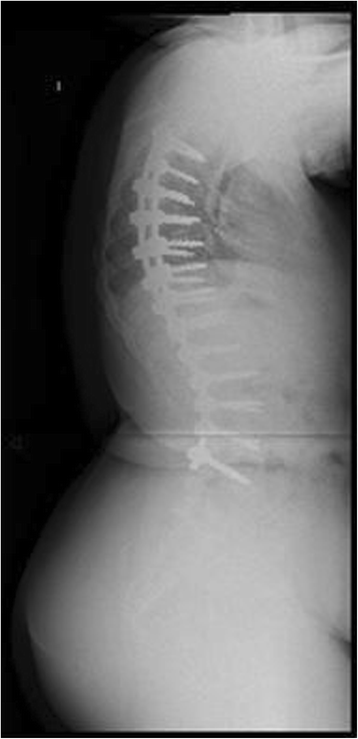
Similar articles
-
Syndromic Scoliosis: National Trends in Surgical Management and Inpatient Hospital Outcomes: A 12-Year Analysis.Spine (Phila Pa 1976). 2019 Nov 15;44(22):1564-1570. doi: 10.1097/BRS.0000000000003134. Spine (Phila Pa 1976). 2019. PMID: 31689252
-
Surgical treatment for scoliosis in Marfan syndrome.Spine (Phila Pa 1976). 2005 Oct 15;30(20):E597-604. doi: 10.1097/01.brs.0000182317.33700.08. Spine (Phila Pa 1976). 2005. PMID: 16227876
-
Posterior spinal fusion for scoliosis in Ehlers-Danlos syndrome, kyphoscoliosis type.Orthopedics. 2011 Jun 14;34(6):228. doi: 10.3928/01477447-20110427-28. Orthopedics. 2011. PMID: 21667916
-
Spine deformities in rare congenital syndromes: clinical issues.Spine (Phila Pa 1976). 2009 Aug 1;34(17):1815-27. doi: 10.1097/BRS.0b013e3181ab64e9. Spine (Phila Pa 1976). 2009. PMID: 19644333 Review.
-
Progressive double major scoliotic curve with concurrent lumbosacral spondylolisthesis in a skeletally immature patient with Marfan syndrome treated with anterior scoliosis correction.Spine Deform. 2020 Feb;8(1):139-146. doi: 10.1007/s43390-020-00031-6. Epub 2020 Jan 24. Spine Deform. 2020. PMID: 31981144 Review.
Cited by
-
Preoperative Base Excess as a Predictor of Perioperative Complications in Patients with Nonidiopathic Scoliosis who Have High Risk Associated with General Anesthesia.Spine Surg Relat Res. 2022 Dec 12;7(3):268-275. doi: 10.22603/ssrr.2022-0186. eCollection 2023 May 27. Spine Surg Relat Res. 2022. PMID: 37309499 Free PMC article.
-
Adolescent scoliosis in autism spectrum disorder: is it idiopathic or syndromic??J Orthop Surg Res. 2025 Jun 9;20(1):577. doi: 10.1186/s13018-025-05816-x. J Orthop Surg Res. 2025. PMID: 40490763 Free PMC article.
-
Seventeen-year outcome of surgical management of severe early onset kyphoscoliosis in a patient with arthrochalasia-type Ehlers-Danlos.Spine Deform. 2025 Jul;13(4):1277-1282. doi: 10.1007/s43390-025-01071-6. Epub 2025 Apr 14. Spine Deform. 2025. PMID: 40227332 Free PMC article.
-
Reliability of the Modified Clavien-Dindo-Sink Complication Classification System in Pediatric Orthopaedic Surgery.JB JS Open Access. 2018 Oct 23;3(4):e0020. doi: 10.2106/JBJS.OA.18.00020. eCollection 2018 Dec 20. JB JS Open Access. 2018. PMID: 30882054 Free PMC article.
-
Intraoperative hypotension during surgical treatment for Marfan syndrome scoliosis in children.J Child Orthop. 2022 Oct;16(5):416-423. doi: 10.1177/18632521221126923. Epub 2022 Oct 3. J Child Orthop. 2022. PMID: 36238138 Free PMC article.
References
-
- Lipton GE, Guille JT, Kumar SJ. Surgical treatment of scoliosis in Marfan syndrome: guidelines for a successful outcome. J Pediatr Orthop. 2002;22(3):302–7. - PubMed
LinkOut - more resources
Full Text Sources
Other Literature Sources
Research Materials

